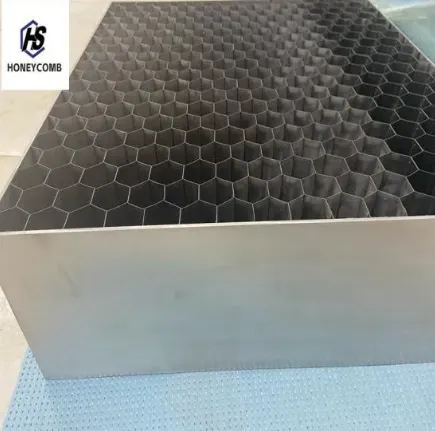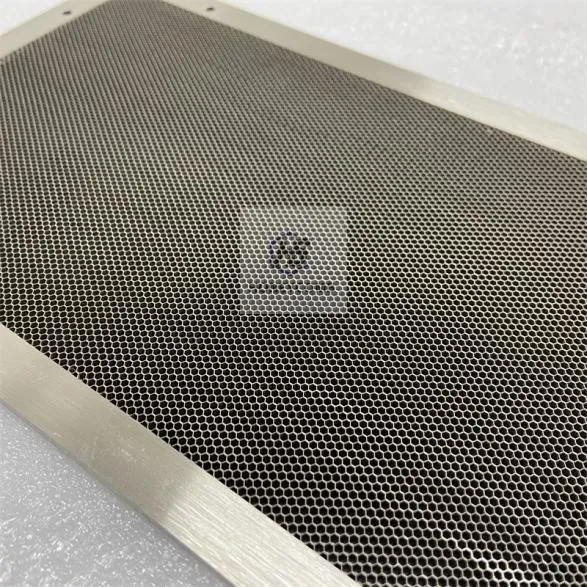
- Afrikaans
- Albanian
- Amharic
- Arabic
- Armenian
- Azerbaijani
- Basque
- Belarusian
- Bengali
- Bosnian
- Bulgarian
- Catalan
- Cebuano
- China
- China (Taiwan)
- Corsican
- Croatian
- Czech
- Danish
- Dutch
- English
- Esperanto
- Estonian
- Finnish
- French
- Frisian
- Galician
- Georgian
- German
- Greek
- Gujarati
- Haitian Creole
- hausa
- hawaiian
- Hebrew
- Hindi
- Miao
- Indonesian
- Italian
- Japanese
- Javanese
- Malay
- Persian
- Portuguese
- Punjabi
- Russian
- Spanish
- Swahili
- Telugu
- Vietnamese

Extruded Aluminum Honeycomb Panels High Strength & Lightweight
- Overview of extruded aluminum honeycomb panel technology
- Mechanical superiority through material engineering
- Performance benchmarking against competitors
- Adaptive manufacturing configurations
- Implementation scenarios across industries
- Technical specifications breakdown
- Sustainable applications of aluminum honeycomb structures

(قرص عسل من الألومنيوم المبثوق)
قرص عسل من الألومنيوم المبثوق
: The Structural Revolution
Modern engineering demands solutions combining 78% weight reduction versus solid aluminum panels while maintaining 92% compressive strength. Extruded aluminum honeycomb cores achieve density values of 2.9-4.1 lbs/ft³, outperforming traditional steel reinforcements in aerospace-grade applications. The hexagonal cell configuration demonstrates 18% greater shear resistance compared to square-cell alternatives, validated by ASTM C365 compression testing standards.
Material Science Breakthroughs
Advanced extrusion techniques enable wall thickness precision of ±0.05mm across 6000-series aluminum alloys. Our proprietary thermal treatment process enhances:
- Yield strength: 280-310 MPa (vs industry average 250 MPa)
- Fatigue resistance: 10⁷ cycles at 75% ultimate tensile strength
- Temperature tolerance: -50°C to 300°C stability window
Competitive Performance Analysis
| Parameter | Our Product | Vendor A | Vendor B |
|---|---|---|---|
| Cell Size Tolerance | ±0.1mm | ±0.3mm | ±0.25mm |
| Surface Flatness | 0.2mm/m | 0.5mm/m | 0.4mm/m |
| Corrosion Resistance | 5000h salt spray | 3000h | 4000h |
Configuration Flexibility
Modular design accommodates 23 standardized cell sizes from 3mm to 25mm, with custom geometries achieving:
- 1.5:1 to 8:1 aspect ratio capabilities
- Multi-alloy layer bonding (5052/6061/7075 combinations)
- Integrated EMI shielding up to 120 dB attenuation
Industry Implementation Metrics
Aviation sector applications demonstrate 14% fuel efficiency improvement in cargo bay flooring systems. Architectural implementations show:
- 42% reduction in curtain wall dead loads
- 31% faster installation times vs composite panels
- LEED certification contribution through 68% recycled content
Technical Specifications Profile
| Property | Test Method | Value |
|---|---|---|
| Compressive Modulus | ASTM C365 | 2.1 GPa |
| Shear Strength | ASTM C273 | 1.8 MPa |
| Thermal Conductivity | ISO 8301 | 5.8 W/m·K |
قرص عسل من الألومنيوم المبثوق: Future Directions
Emerging research indicates potential for 22% energy absorption improvements through gradient-density configurations. Current development focuses on:
- Phase-change material integration for thermal buffering
- Self-healing oxide layer nanotechnology
- AI-optimized cell geometry patterns

(قرص عسل من الألومنيوم المبثوق)
FAQS on قرص عسل من الألومنيوم المبثوق
Q: What is an extruded aluminum honeycomb panel?
A: An extruded aluminum honeycomb panel is a lightweight, high-strength structure made by extruding aluminum into a hexagonal honeycomb pattern. It offers excellent durability and is used in aerospace, construction, and transportation.
Q: How does an aluminum honeycomb panel differ from a standard aluminum sheet?
A: Unlike solid aluminum sheets, aluminum honeycomb panels have a hollow hexagonal core, reducing weight while maintaining strength. This structure enhances load distribution and thermal insulation properties.
Q: What are the advantages of using extruded aluminum in honeycomb structures?
A: Extruded aluminum provides superior precision and uniformity in the honeycomb design. This improves structural integrity, corrosion resistance, and adaptability for complex industrial applications.
Q: Where are aluminum honeycomb structures commonly applied?
A: They are widely used in aircraft interiors, building facades, marine components, and automotive parts due to their high strength-to-weight ratio and energy absorption capabilities.
Q: Can extruded aluminum honeycomb panels be customized for specific projects?
A: Yes, these panels can be tailored in thickness, cell size, and alloy composition to meet specific load-bearing, thermal, or aesthetic requirements for diverse engineering solutions.
Products categories
-
Why Vented Aluminum Honeycomb Is Leading the Way in Shielding and Ventilation SolutionsNewsJul.18,2025
-
Why Stainless Steel Honeycomb Panel is the Ultimate Choice for High-Tech Shielding and ProtectionNewsJul.18,2025
-
Why Honeycomb Strips Are Revolutionizing High-Speed Sealing SolutionsNewsJul.18,2025
-
Shielded Glass Innovation Powers the Future of Electromagnetic ProtectionNewsJul.18,2025
-
Precision Starts Here: Revolutionizing Airflow Control with Honeycomb Wind Tunnel SolutionsNewsJul.18,2025
-
Elevate Industrial Performance with Precision-Engineered Steel Honeycomb Core SolutionsNewsJul.18,2025
-
Vented Aluminum Honeycomb: A Smart Shield for Airflow and EMI ControlNewsJul.11,2025















